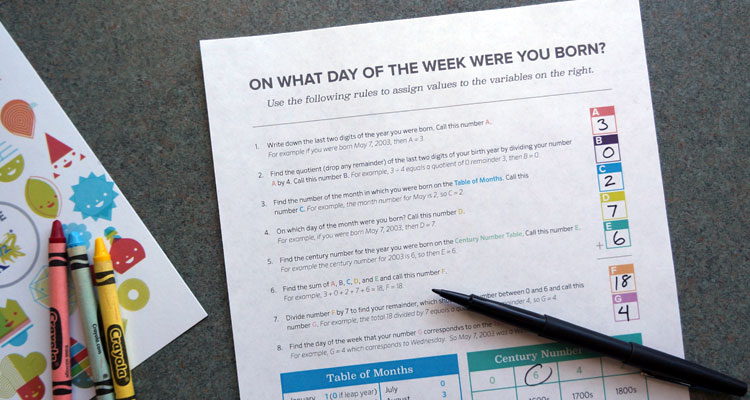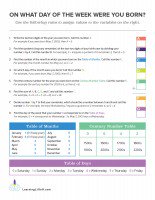You may think that leap year happens every four years, but that is not always the case. Understanding how leap year works takes a little calculation, which makes it a great opportunity for kids to learn math!
As it turns out, February 29 is not added to the calendar every four years. It’s true that all non-century years that are divisible by four are leap years, but that doesn’t hold true for century years. The best way to calculate whether a particular year will include the extra leap day is to first see if the year can be divided by four. If not, it isn’t a leap year. If it is, then check to see if it is also divisible by 100. If it isn’t, it will be a leap year. If it can be evenly divided by 4 and 100 (such as 2000), then check to see if it is divisible by 400. If it is, then that is a leap year. If it is not, such as 1900, then it is not a leap year.
The reason for all this extra calculation is because the Solar System doesn’t take an exact number of days to orbit the sun. It was Julius Caesar’s astronomer, Sosigenes of Alexandria, who suggested the 365-day calendar with an extra day (leap day) every four years. But, by the 16th century the Julian calendar was ten days behind the solar calendar. To correct this error, in 1582 Pope Gregory XIII (hence the Gregorian calendar) fine-tuned the calendar to ensure it stayed in line with the Earth’s movement around the sun and moon by ordering the advancement of the calendar by ten days and omitting leap year three times every four hundred years.
So, how rare is it to be born on a leap day? Statistically, about one in 1,461 births are a “leaplings” born on February 29. Worldwide, there are between four and five million leaplings and an estimated 200,000 in the United States. So, the odds are not high that a child will be born on the leap day as opposed to any other day of the year, or one in 365. I think leaplings are lucky, not only because they beat the odds, but also because they get to choose whether they celebrate their birthday on February 28 or March 1 during off-leap years.
Leaplings, like all of us, know the date they were born, but there’s a good chance they may not know the day of the week they were born. It would be easy to just do a quick Google search to discover the day or just check the online 100-year calendar to find out, but that would take all the fun and mathematics out of it! As a teacher, I found my students always enjoyed doing the math first and then confirming their calculations online. But, even if your child already knows the day of the week of their birth date, it can be a fun and educational exercise for them to calculate their own birthday using simple math.
There are different ways students can calculate the day of the week on which they were born. I created this chart based on the Key Value Method. Simply fill in the colored squares with your children to calculate their birthday or any other day of the week.
The math doesn’t have to stop once everyone has calculated the day of the week they were born and confirmed it. There’s a wealth of data that can be collected, graphed, and analyzed related to day of birth.
Several years ago, I created a two-week unit of study entitled “Calendar Capers” which included a look at the history of the calendar, having my approximately 120 six grade students calculate their day of birth and then having each graph their birthday by placing a star (red for girls and blue for boys) on a large “A Star is Born” graph to determine the day of the week most six graders were born. The data provided ample opportunities to explore mean, median, mode, and range.
To incorporate more real-life data collection and reporting, I had the students determine the day of the week that most students were born at our local hospital during the past year using data provided by the hospital’s obstetrics department. After calculating monthly charts, they eventually created a large graph for the entire year that was provided to the local hospital for display.
These activities are just a few ways for students to apply mathematics and see how it can be used. To maximize opportunities for learning and doing mathematics, it’s beneficial for students to participate in a variety of learning activities using an array of different tools.
One tool that can serve in assessing mastery and aiding students in learning mathematics is LearnBop, a highly adaptive online math program for grades 4–12. Every incorrect answer becomes a learning opportunity and our math tutoring program allows students to learn from mistakes with custom feedback, and then try again. If a student makes a mistake or asks for help, the automated tutoring system breaks down the problem and guides the student. The one-to-one interactive platform offers hints, visuals, and videos for each student to self-pace in order to gain mastery before moving on to the next concept. View the website for more details.
[schedule on=’2016-02-25′ at=”03:01″ expon=’2016-05-01′ expat=”23:55″] LearnBop will be available later this spring, but you can sign up now to receive a special 33 percent discount off the subscription price. [/schedule]
So, what are you waiting for; leap into mathematics today!






































